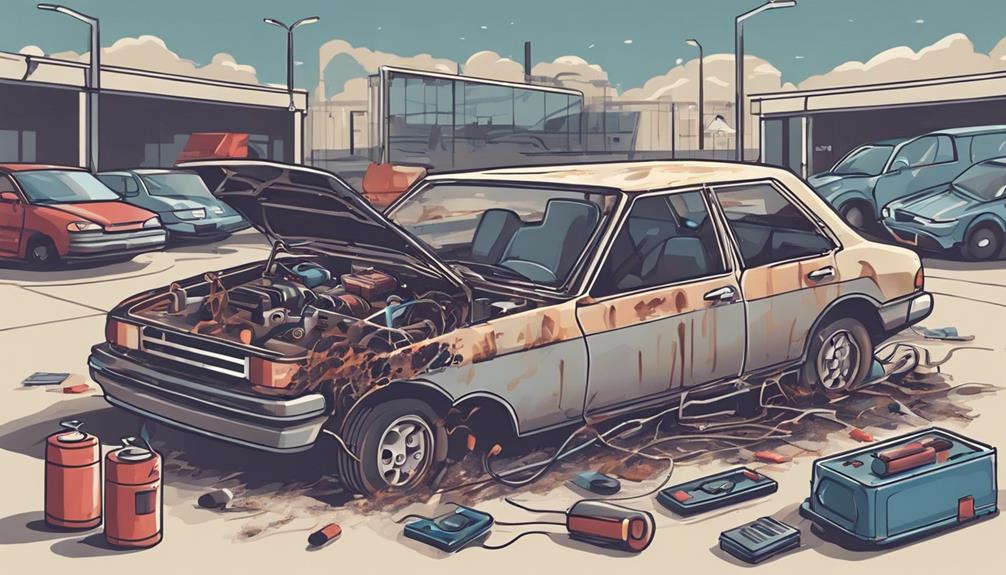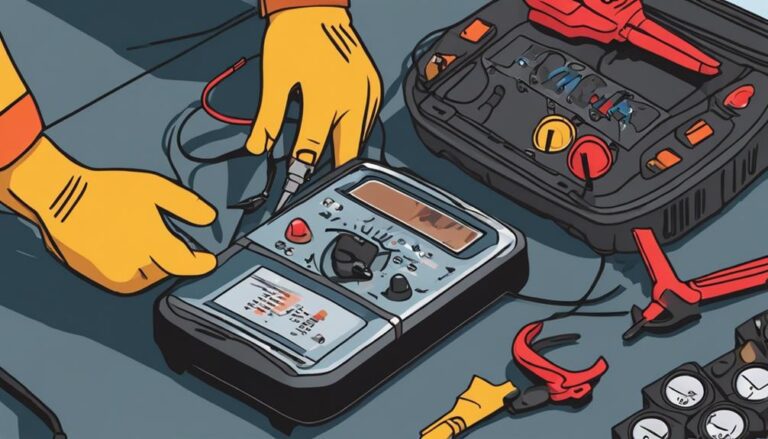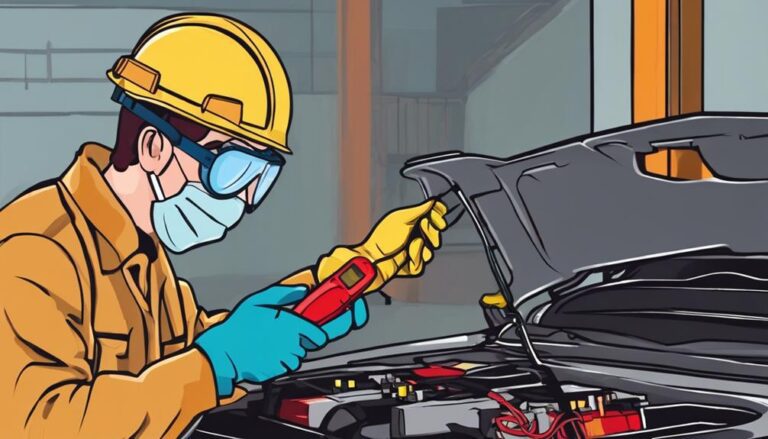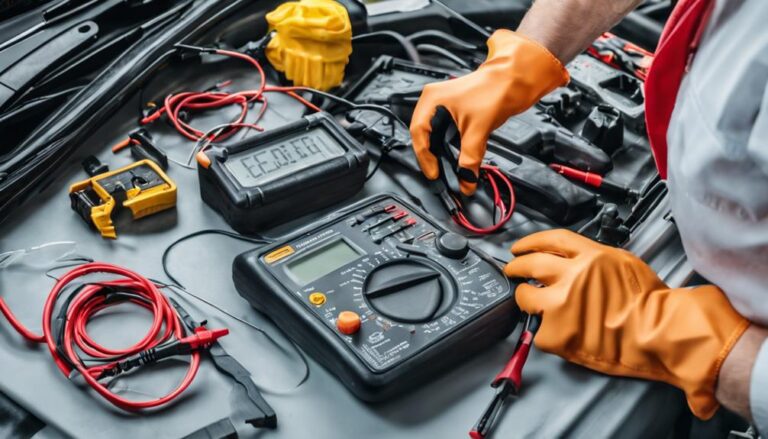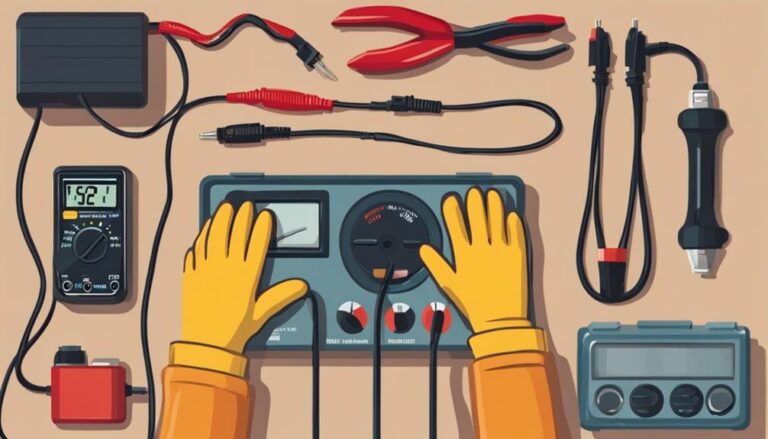What Causes Common Battery Failures in Cars?
Ever wondered what lies beneath the surface of your car battery, silently affecting its performance? Acid stratification, a subtle yet potent process, could be silently deteriorating your battery's health.
But that's just the tip of the iceberg. Dive deeper into the intricate world of car batteries to uncover the hidden culprits behind those frustrating common failures.
Key Takeaways
- Low charge levels and sulfation accelerate battery degradation.
- Power-hungry features strain the battery, leading to failures.
- Improper maintenance and charging practices reduce battery lifespan.
- Visual inspection and regular maintenance prevent internal short circuits.
Acid Stratification in Luxury Cars
Why does acid stratification pose a significant risk to luxury car batteries?
Acid stratification is a critical concern for luxury car batteries due to the potential for reduced battery performance and overall health. Preventing stratification is key to maintaining battery efficiency. Luxury vehicles equipped with power-hungry auxiliary options are more prone to this issue, especially when engaged in short-distance drives.
To combat acid build-up and stratification, proper battery maintenance techniques are essential. Regularly running power-hungry accessories on brief trips accelerates the stratification process, significantly impacting the battery's ability to hold a charge effectively.
Failure to address acid stratification can lead to battery breakdowns, making it a prevalent cause of vehicle issues, particularly in newer luxury models. By implementing appropriate maintenance routines and minimizing short trips with heavy accessory usage, luxury car owners can extend their battery's lifespan and optimize performance.
Impact of Battery Testing Challenges
Transitioning from the concerns of acid stratification in luxury car batteries, the impact of battery testing challenges is a crucial aspect to consider in ensuring accurate evaluations of battery health and performance.
The effectiveness of Electrochemical Impedance Spectroscopy (EIS) technology plays a significant role in providing rapid and reliable assessments of battery condition. While entry-level testers offer preliminary insights, they may lack the precision and reliability that EIS provides.
Inaccurate testing methods often lead to premature battery replacements, increasing costs and wastage. Moreover, the accuracy of Alternating Current (AC) conductance testing in detecting weak batteries may not match the precision of EIS-based testers.
Advancements in battery testing technology aim to enhance the accuracy of evaluations without necessitating full discharge, ensuring more precise and dependable results. It's essential to embrace these technological advancements to avoid unnecessary battery replacements and optimize vehicle performance.
Common Causes of Battery Degradation
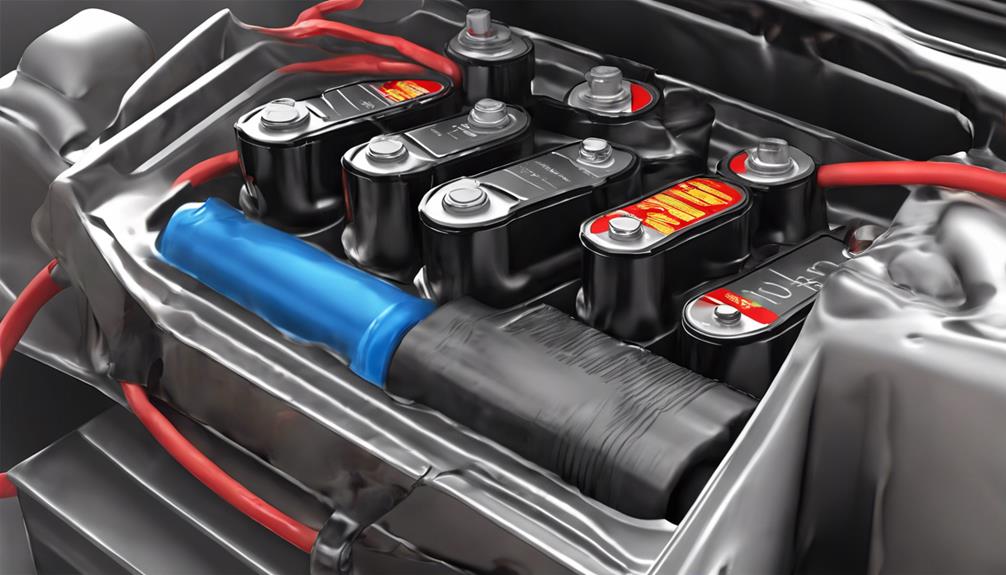
Experiencing acid stratification from short distance driving with power-hungry options is a significant contributor to common battery degradation issues in vehicles. Battery maintenance and charging practices play crucial roles in preserving the health of your vehicle's power source. Here are some key factors that can lead to battery degradation:
- Low Charge Levels: Allowing your battery to consistently reach low charge levels can accelerate its deterioration.
- Sulfation: The formation of sulfate crystals on the battery plates due to prolonged discharges can hinder its performance.
- Luxury Features: Vehicles equipped with power-hungry auxiliary options, such as advanced entertainment systems, can strain the battery, leading to quicker degradation.
- Improper Charging: Incorrect charging practices, like overcharging or undercharging, can significantly reduce the lifespan of your battery.
Importance of Visual Battery Inspection
Visual inspection of your vehicle's battery terminals is a crucial step in identifying potential issues that could affect its performance and longevity. By examining the battery closely, you can spot signs of corrosion, loose connections, or other visible problems that may hinder its functionality. It is essential to conduct this inspection regularly to ensure your battery remains in optimal condition.
| Signs of Corrosion | Loose Connections |
|---|---|
| White or bluish powder on terminals | Terminals not securely attached to the battery posts |
| Corroded or rusted battery terminals | Visible gaps between the terminal and the post |
| Acid leaks around the battery | Signs of arcing or sparking when starting the vehicle |
| Bulging or bloating battery case | Flickering headlights or dimming interior lights |
| Strange odors coming from the battery | Intermittent electrical issues in the vehicle |
These visual cues can provide early warnings of potential battery failures, allowing you to take proactive measures before more severe problems arise. Regular visual inspections are a simple yet effective way to ensure the health and longevity of your vehicle's battery.
Preventing Internal Short Circuits
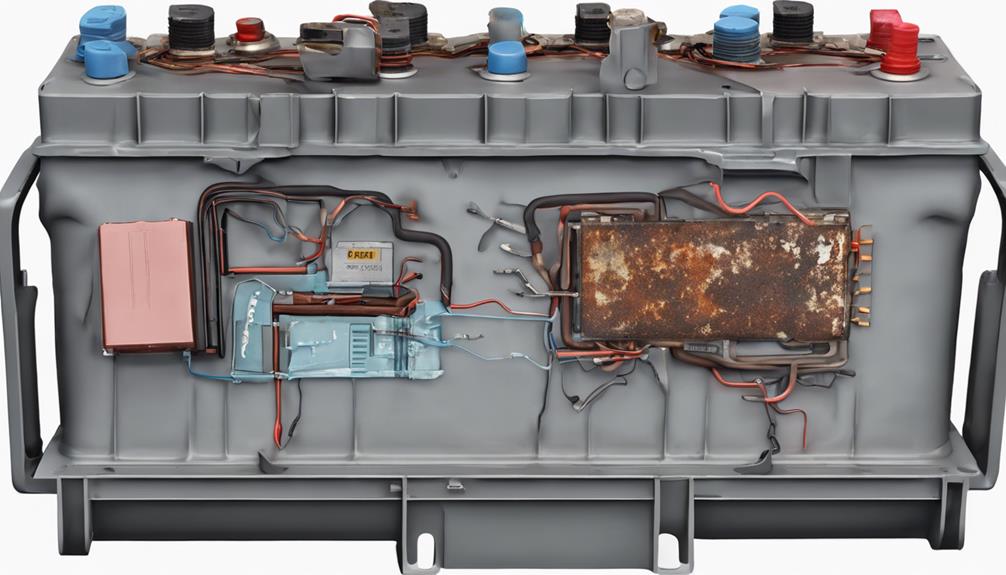
Inspecting the battery casing and components regularly is crucial in preventing internal short circuits in car batteries, which can result from physical damage, excessive heat, or overcharging. To avoid these issues, follow these guidelines:
- Regular Maintenance: Make it a habit to inspect your battery for any signs of wear and tear, such as cracks or leaks, and address them promptly.
- Proper Handling: Ensure that the battery is securely fastened in place to prevent vibration-induced damage that could lead to short circuits.
- Avoid Overcharging: Use a smart charger or a charging system with automatic shutoff to prevent overcharging, which can stress the battery and increase the risk of internal shorts.
- Monitor Temperature: Keep the battery within the recommended temperature range to prevent overheating, which can accelerate internal degradation and short circuit formation.
Frequently Asked Questions
What Are the 3 Main Causes of Battery Failure?
When neglecting maintenance and allowing corrosion buildup, battery life diminishes. Sulfation from improper maintenance, acid stratification due to short drives, and luxury car power demands are common factors. Regular checks and proper care prevent these failures.
What Is Most Likely to Cause Battery Failure?
If you neglect the heart of your car, like a garden left without care, corrosion can creep in, leading to battery failure. Keep vigilant on corrosion prevention and watch out for alternator issues.
What Drains a Car Battery When Car Is Off?
When your car is off, various factors like leaving lights on, electronics drawing power, or key fobs close by can cause parasitic drain on the battery. Preventive measures include monitoring electronics, regular battery checks, and addressing electrical system issues promptly.
Why Did My Car Battery Suddenly Fail?
You experienced a sudden car battery failure likely due to poor maintenance and extreme temperatures affecting battery life. Preventative measures like regular checks and proper charging can help avoid unexpected breakdowns, ensuring a reliable ride.
Conclusion
To maintain optimal battery health in cars, it's crucial to address common issues such as acid stratification, low charge, sulfation, and excessive power usage.
Regularly checking battery levels, avoiding power-hungry accessories on short trips, and utilizing advanced battery testers like EIS are essential practices.
By staying proactive in monitoring and maintaining your car battery, you can prevent failures and ensure reliable performance on the road.

